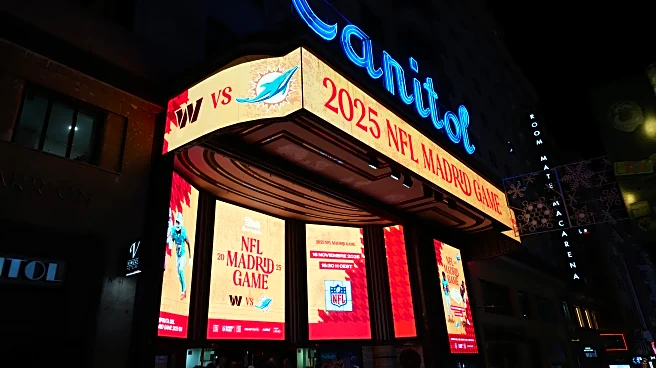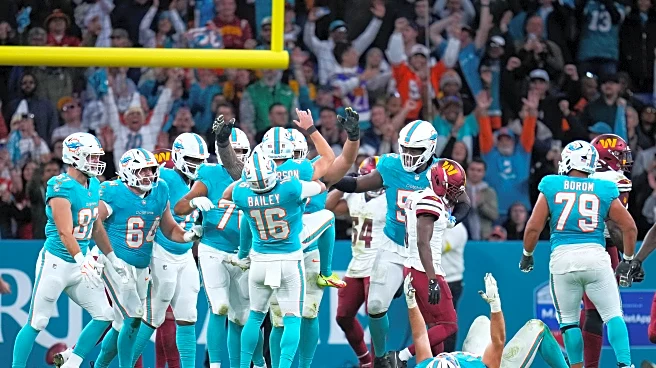What's Happening?
Real Madrid's Bernabéu Stadium underwent a significant transformation to host an NFL game between the Miami Dolphins and Washington Commanders. The stadium, traditionally used for soccer, was equipped
with a high-tech system to switch out the playing surfaces, allowing it to accommodate the requirements of an American football game. This transformation was part of a larger renovation project that cost over €1 billion, showcasing the club's investment in modernizing its facilities. The process was documented in a time-lapse video shared by Real Madrid, highlighting the engineering feat involved in preparing the stadium for the event.
Why It's Important?
The hosting of an NFL game at Real Madrid's Bernabéu Stadium marks a significant moment in the globalization of American football. It reflects the NFL's ongoing efforts to expand its international presence and engage with a broader audience. The successful transformation of the stadium could pave the way for more NFL games in Spain, potentially boosting tourism and local economies. NFL Commissioner Roger Goodell expressed enthusiasm about the venue, suggesting that the league might return in the future, which could further strengthen international ties and increase the sport's popularity outside the United States.
What's Next?
Following the successful hosting of the NFL game, there is potential for more international games to be scheduled in Spain and other countries. The NFL's interest in expanding its global footprint could lead to strategic partnerships with international sports venues, enhancing the league's visibility and fan base worldwide. Stakeholders, including local businesses and tourism boards, may anticipate increased economic activity from future events. Additionally, the NFL might explore further collaborations with Real Madrid and other European clubs to facilitate more cross-sport events.
Beyond the Headlines
The transformation of Bernabéu Stadium for an NFL game highlights the growing trend of sports venues adapting to host multiple types of events, reflecting a shift towards multifunctional use of sports infrastructure. This adaptability not only maximizes the utility of such venues but also underscores the increasing convergence of different sports cultures. The successful execution of this event could inspire other sports organizations to explore similar opportunities, fostering a more interconnected global sports community.













